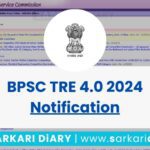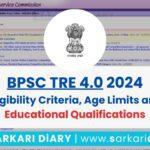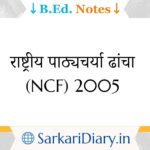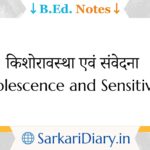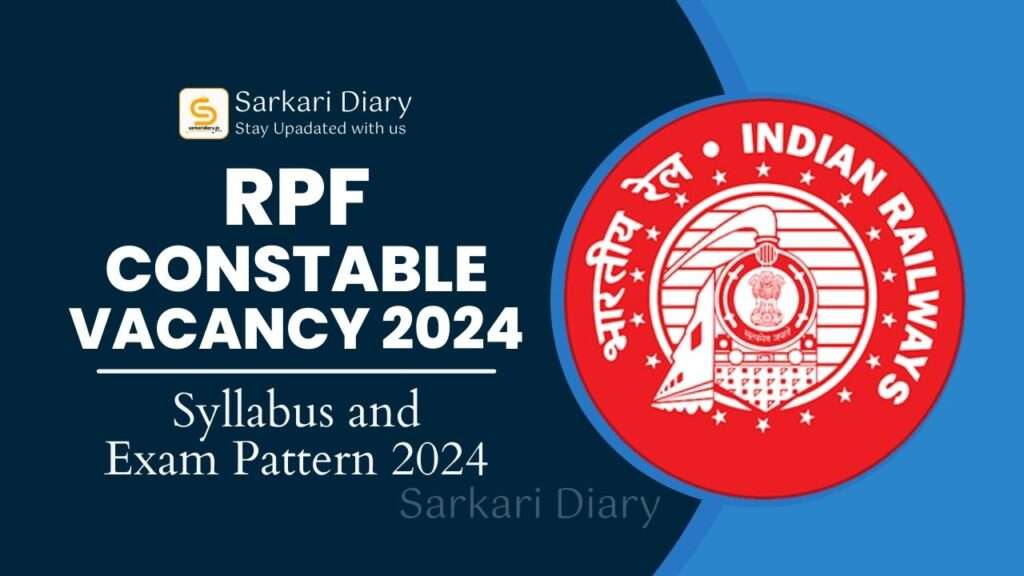
What is RPF ?
RPF stands for Railway Protection Force and is one of the security forces of India. The role of RPF is to protect the property and passengers of Indian Railways. The RPF is the only Central Armed Police Force (CAPF) that has powers similar to regular state police forces. Senior officers of RPF are recruited through Civil Services Examination. To get selected in RPF, candidates have to go through rigorous selection processes including written examination. Candidates appearing for the RPF exam must understand the syllabus to excel. A person having better understanding and knowledge of the exam pattern and syllabus has already achieved one stage of preparation. In this article, we will discuss the RPF syllabus and exam pattern.
RPF Exam Pattern 2024
It’s crucial to understand the exam pattern of the RPF 2024 exam to excel in the RPF (Railway Protection Force) exam. The exam pattern provides knowledge about the structure of the exam, marking scheme, and time allocation for each section. The RPF exam pattern will help you develop a strategic approach to your preparation. It will help you aim for your weaker target to ace the examination. Here is the exam pattern of the RPF 2024 exam –
Stages in RPF exam 2024
There are three stages in the RPF exam
- Stage 1 Computer Based Test (CBT)
- Stage 2 Physical Efficiency Test (PET)
- Stage 3 Physical Measurement Test (PMT)
Stage -1 Computer Based Test
The first stage of the RPF exam is the Computer Based Test, where the candidate must score at least the minimum qualifying marks. Candidates need to clear the exam to get into the next stage. Here are some important points related to CBT.
- Candidates can attempt the exam in their regional language, apart from English and Hindi.
- There are 120 multiple-choice questions in the RPF exam.
- Every correct answer will give you 1 mark and incorrect answer will deduct 1/3 of the marks.
- There are three sections in the RPF exam. They are – Quantitative Aptitude, Reasoning and intelligence, and General Awareness.
- The duration for completing the exam is 1.5 hours.
- Candidate has to achieve at least the minimum qualifying marks based on their respective categories to clear the exam. The qualifying percentages for different categories are as follows-
- General/OBC/Unreserved Candidates: 35%
- SC/ST Candidates: 30%
Stage -2 Physical Efficiency Test (PET)
The second stage of the RPF exam is PET, where candidates undergo several physical abilities measurements. Only those candidates who clear the CBT are eligible for PET. We will discuss the PET syllabus later.
Stage -3 Physical Measurement Test (PMT)
After qualifying for PET, candidates undergo a Physical Measurement Test (PMT). During PMT, candidates undergo a physical measurement check conducted by the authorities to measure the height and chest to ensure they meet the eligibility criteria. Candidates failing to meet the prescribed height and chest measurement may be disqualified from further stages of the selection process.
Reminder- the Physical Measurement Test (PMT) standards for chest and height are only for male candidates.
RPF Constable Syllabus 2024
The syllabus is a vital part of RPF exam preparation. Your understanding and knowledge of the RPF constable syllabus can make your preparation stronger. The purpose of knowing the Syllabus is to work on your weaker section a little more than others. Here, we have divided the RPF syllabus into three sections- CBT, PET, and PMT.
RPF Syllabus for CBT
Computer Based Test is the first stage of the RPF exam and includes three sections- Logical Reasoning, Analytical Reasoning, Verbal Ability, and Quantitative Aptitude. Here is the syllabus for different sections.
Syllabus for Quantitative Aptitude.
Quantitative Aptitude tests the calculation and mathematics abilities of the candidate. Here is the Quants syllabus for RPF-
- Whole numbers
- Time and Distance
- Table and Graphs
- Relationships between numbers
- Ratio and Proportion
- Profit and Loss
- Percentage
- Number system
- Mensuration
- Interest
- Discount
- Decimal and Fraction
- Average
- Arithmetic Operations
Syllabus of General Intelligence and Reasoning
The second subject is General Intelligence and Reasoning. This section evaluates the candidates’ logical Reasoning Abilities and General Intelligence and includes 35 objective-type questions for 35 marks. Candidates must focus on a specific area to excel in this section. Here are the topics you must include in the RPF Syllabus.
- Visual Memory
- Verbal Reasoning
- Syllogism
- Statement and Conclusion
- Spatial Visualization
- Spatial Orientation
- Similarities and Differences
- Problem-Solving
- Number Series
- Non-Verbal Series
- Decision Making
- Coding-Decoding
- Blood Relations
- Arithmetic Reasoning
- Analogy
Syllabus for General Awareness
General Awareness is a topic that covers everything. You can never get complete knowledge of this topic as it is very vast. Here are the topics you must prepare for General Awareness.
- Art and Culture
- Current affairs
- Economics
- General Science
- Geography
- Indian Constitution
- Indian History
- Polity
- Sports
RPF Syllabus for PET
The second stage of the RPF exam is PET, where the candidate has to perform some tasks to showcase their physical fitness and endurance. Here are the tasks that the candidate has to perform in PET-
| Task | Female | Male |
| Running (1600 meters) | – | Within 5 min 45 secs |
| Running (800 meters) | Within 3 min 40 secs | – |
| Long jump | 9 feet | 14 feet |
| High jump | 3 feet | 4 feet |
Other Activities-
The activities given above are mandatory. The authority can add other physical activities, such as shuttle running, swimming, or rope climbing to assess the overall fitness.
RPF Syllabus for PMT
The third stage of the RPF exam is Physical Measurement Test. in this stage , the candidate undergo physical examination to meet the physical standards. Here are the physical standards for RPF PMT exam –
For Male Only –
| Category | Chest (in cms) | |
| Expanded | Unexpanded | |
| UR/OBC | 85 | 80 |
| SC/ST | 81.2 | 76.2 |
| Garhwalis, Gorkhas, Marathas, Dogras, Kumaonese and other categories specified by Govt. | 85 | 80 |
For Male and Female –
| Category | Height (in CMs) | |
| Female | Male | |
| UR/OBC | 157 | 165 |
| SC/ST | 152 | 160 |
| Garhwalis, Gorkhas, Marathas, Dogras, Kumaonese and other categories specified by Govt. | 155 | 163 |
